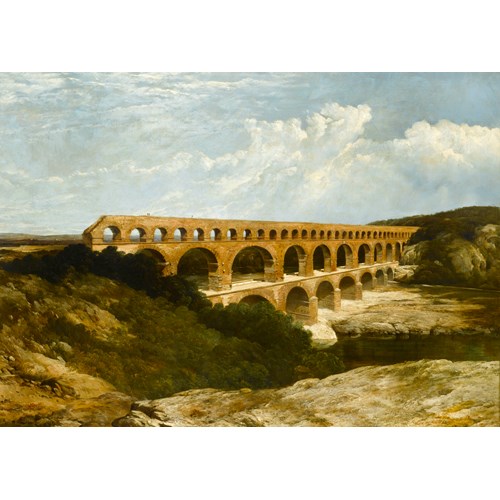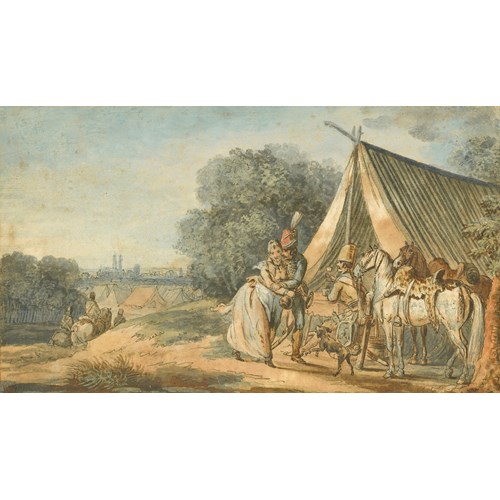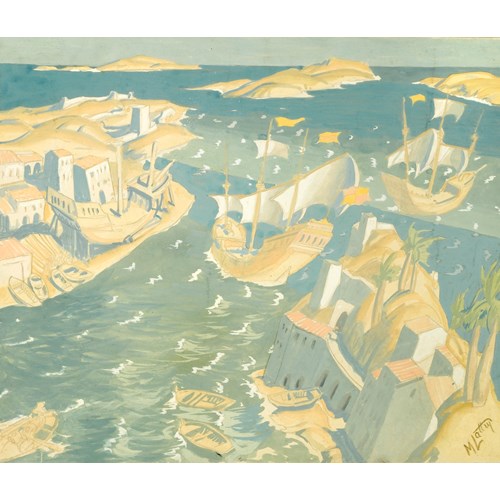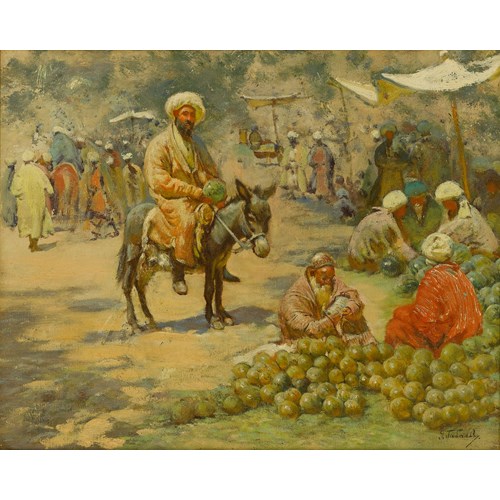Willem van de Velde the Younger
A Dutch Flagship at Anchor attended by Small Boats, the Fleet seen Beyond
Period 1600-1750, 17th century
Origin England
Medium Pen, Black ink, Grey wash, Blach chalk
Dimension 27.4 x 51.5 cm (10³/₄ x 20¹/₄ inches)
Although van de Velde’s reputation rests on his highly regarded representations of coastal scenes and ships in the medium of oil, such as his The Gouden Leeuw before Amsterdam, the present work nevertheless demonstrates his technical expertise, executed with apparent ease and freedom of touch. His best productions remained faithful to a vessel’s structure and rigging and here, despite its fleeting impression, neither proportion nor accuracy is compromised. Closer inspection reveals a mastery of form and detail, evident in the flagship’s ornamentation, its guns and sails, as well as the movement of figures and oars aboard the smaller boats. The delicately drawn ships, careful placing of each vessel, and soft tones achieve a satisfying composition and serene atmosphere - trademark qualities of van de Velde that led to his fame as an artist. Successful in his renderings of the sea, painting calm and storm with equal ability, he proved more than adept at capturing the rich and evocative atmospheres of seascapes, whether in a subtle, refined work such as this, or in a large-scale oil painting.
Van de Velde was born in the Netherlands in a family of artists. He received his training from his father Willem van de Velde I (1611-1693), and from Simon de Vlieger (c.1600/1-1653), both accomplished marine artists. He learnt the qualities of detailed realism from the former, who provided extraordinarily comprehensive records of ships. From de Vlieger he adopted atmospheric effects from the latter and his influence can be seen in van de Velde’s oil paintings.
In 1673, van de Velde and his father settled in England where they became a formidable team, producing a vast amount of work, now of historical significance. He was commissioned by Charles II, at a salary of £100, to aid his father in ‘taking and making draughts of sea-fights’. Van de Velde I, provided eyewitness drawings of warships and naval actions, which van de Velde II then used to inform his paintings. After his father’s death, it became necessary for van de Velde to be present himself at maritime events; his works began to show a freer approach, being unbound by his father’s scrupulous attention to detail. Demand for the van de Velde’s work was considerable, and they received commissions from the Duke of York and other members of the nobility. The influence of their studio established the van de Veldes, to all intents, as the founders of the English school of marine painting.
Period: 1600-1750, 17th century
Origin: England
Medium: Pen, Black ink, Grey wash, Blach chalk
Dimension: 27.4 x 51.5 cm (10³/₄ x 20¹/₄ inches)
Provenance: Anonymous sale (possibly M.O. Brenner, Berlin); Amsterdam, R.W.P. de Vries, 14 December 1911, lot 1502, perhaps bought by de Vries for Dfl. 150;
with R.W.P. de Vries, Amsterdam, 1917;
property of an important Dutch collector.
Exhibition: R.W.P. de Vries, Amsterdam, 1917, Dessins anciens et modernes: marines et paysages rivérains, p. 24, no. 1509 (offered for Dfl. 300,-).
More artworks from the Gallery









